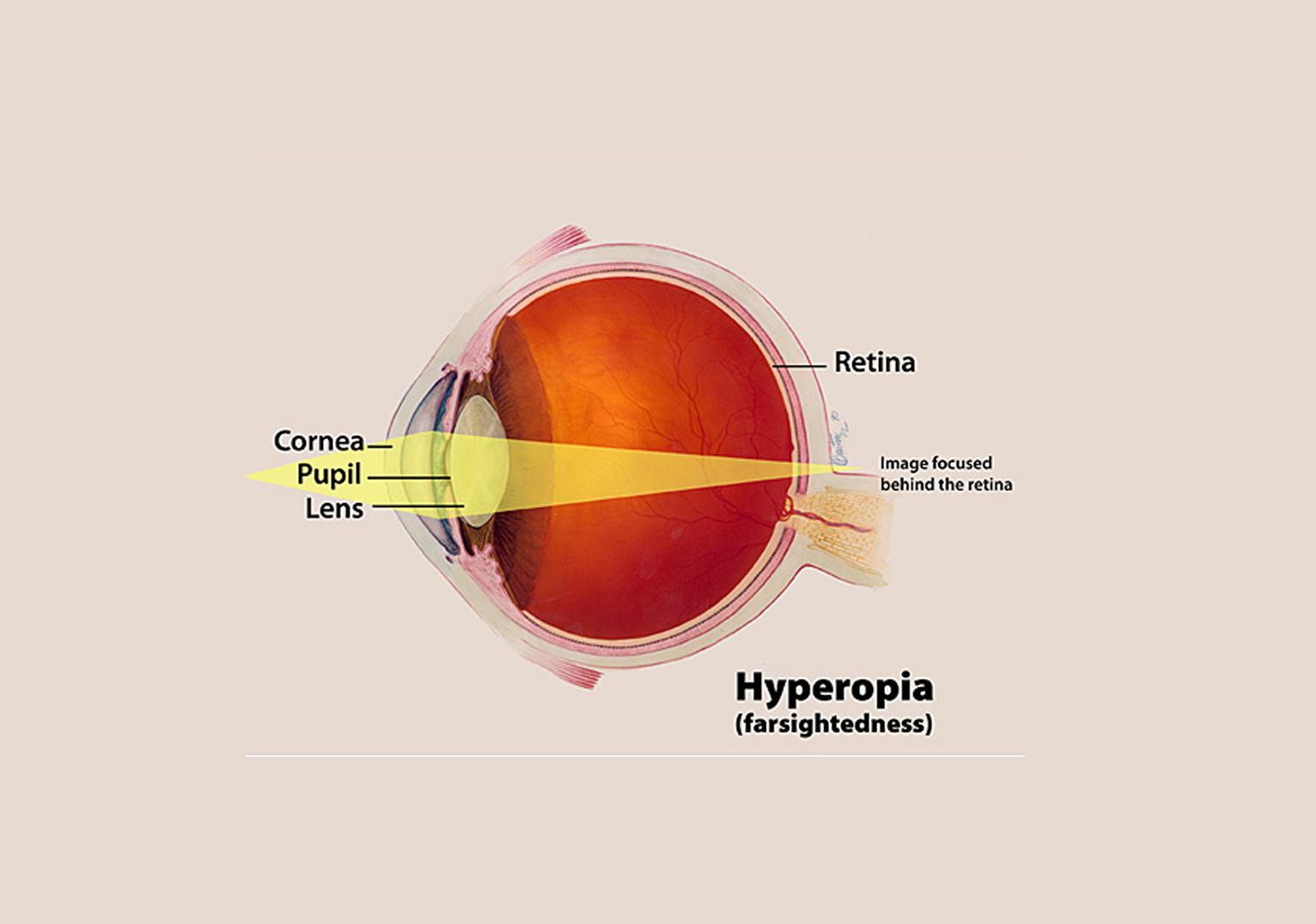
Hyperopia, or farsightedness, is a vision condition in which distant objects are usually seen more clearly than close ones. Hyperopia occurs due to the shape of the eye and its components; it is not just a function of the aging of the lens, which occurs with presbyopia.
To understand farsightedness, it’s helpful to know how the normal eye works. Two parts of the eye are responsible for focusing: the cornea and the lens. The cornea is the clear front surface of your eye. The lens is a structure inside your eye that changes shape as you focus on objects.
The cornea and lens work together to bend or refract, incoming light. Then they focus that light onto your retina. The retina is at the back of your eyeball. It receives visual information and sends it to your optic nerve, which carries that information to your brain.
A perfectly formed, curved lens and cornea allow you to see a perfectly focused image. But if your cornea has a different shape, your eye can’t focus correctly.
There are varying degrees of farsightedness, depending on the eyes’ ability to focus on close-up objects. If you can only clearly see objects that are very far away, you’re severely farsighted. Generally, farsightedness can be corrected with prescription eyeglasses or contact lenses. Some people have refractive surgery.
Symptoms
Farsightedness may mean:
- Nearby objects may appear blurry
- You need to squint to see clearly
- You have eyestrain, including burning eyes, and aching in or around the eyes
- You have general eye discomfort or a headache after doing close tasks, such as reading, writing, computer work or drawing, for a time
In children, strabismus (crossed eyes) can develop when significant farsightedness hasn’t been diagnosed and corrected.
Causes of farsightedness
A flat cornea is one cause of farsightedness. You can also be farsighted if your eyeball is shorter than normal. This causes light to focus beyond your retina instead of on it. You’re more likely to be farsighted if your parents are.
Treating farsightedness
The simplest way to correct farsightedness is to get prescription eyeglasses or contact lenses. These corrective lenses change the way light enters your eyes, helping you focus better.
Refractive surgery can also treat farsightedness. Surgery involves procedures like laser-assisted in-situ keratomileusis (LASIK). While this procedure is more commonly used to treat nearsightedness, it can also treat farsightedness. LASIK uses a laser to change your cornea’s curvature so that light refracts correctly and projects a focused image on your retina.
Refractive surgery isn’t as safe as wearing glasses. Though refractive surgery rarely causes severe complications, it’s possible that it may damage your vision. Possible complications of this surgery include:
- Over- or under-correcting your vision
- Seeing a starburst or halo around lights
- Infection
- Dry eyes
